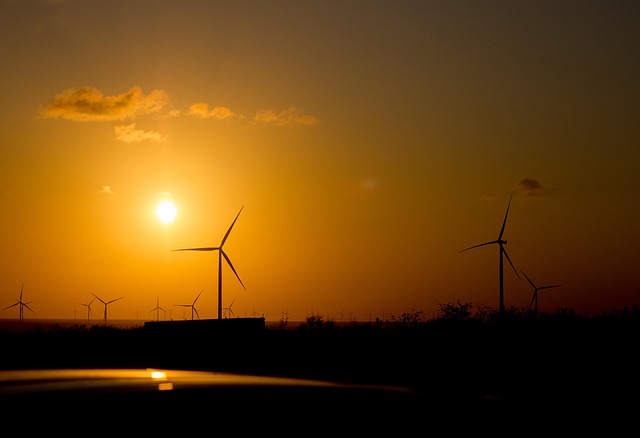Green Energy Investment: Fueling the Future of Finance
In an era increasingly characterized by climate change and environmental degradation, the global financial landscape is undergoing a profound transformation. Green energy investment is emerging as one of the most promising avenues for sustainable financial growth, attracting not just environmental activists, but also savvy investors seeking long-term financial viability. This article explores the multifaceted dimensions of green energy investment, including its significance, benefits, challenges, and future outlook, demonstrating why it is not merely a trend but a fundamental shift in how we approach financial growth and sustainability.
The Growing Importance of Green Energy
The significance of green energy has grown substantially in recent years as stakeholders recognize the urgent need to address climate change challenges. Traditional energy sources, predominantly fossil fuels, are not only finite but also detrimental to the environment, contributing to greenhouse gas emissions and air pollution. In contrast, green energy sources—such as solar, wind, hydroelectric, and geothermal power—offer clean alternatives that can be harnessed sustainably.
Countries around the world are shifting their energy policies to embrace renewable sources. Governments are pledging to achieve carbon neutrality, and they are setting ambitious targets to reduce emissions, which creates a conducive environment for green energy investments. This shift represents not only a moral imperative but also an economic one, as the transition to green energy is forecasted to generate millions of jobs and stimulate local economies.
Financial Advantages of Investing in Green Energy
Investing in green energy is becoming increasingly attractive to both individual and institutional investors. The financial benefits are diverse and significant, encompassing factors such as long-term returns, risk management, and alignment with consumer preferences.
Long-Term Financial Returns
Many studies have shown that investments in green energy can yield higher long-term returns compared to traditional energy investments. For instance, as technology for renewable energy continues to advance, production costs have plummeted, leading to lower barriers to entry. Solar and wind projects, for example, have reached a point where they can compete directly with fossil fuels in terms of cost per unit of energy generated.
Risk Management and Diversification
Investors seeking to manage risk and diversify their portfolios are increasingly turning to green energy as a hedge against market volatilities associated with fossil fuels. The volatility of oil and gas prices can create uncertainty in financial planning. In contrast, renewable energies often have more stable pricing structures and can be insulated from geopolitical tensions affecting traditional fuel sources.
Consumer Preferences and Social Responsibility
With a growing awareness of environmental issues, consumers are increasingly favoring companies committed to sustainability. This consumer trend incentivizes businesses to pivot towards greener practices, creating a virtuous cycle that benefits investors. Companies that invest in renewable energy are often viewed favorably, leading to enhanced brand loyalty and, ultimately, better financial performance.
Challenges in Green Energy Investment
Despite the apparent advantages, green energy investment is not devoid of challenges. Investors must navigate a complex landscape characterized by regulatory hurdles, technological risks, and societal perceptions.
Regulatory Hurdles
The regulatory environment varies significantly across different countries and regions, creating inconsistencies that can complicate investment decisions. Policies related to subsidies, tax credits, and renewable energy standards can be subject to change, impacting the stability of investments. While some governments actively support green energy projects, others maintain traditional energy policies that perpetuate reliance on fossil fuels.
Technological Risks
Technological advancements are a double-edged sword in the green energy sector. While emerging technologies can enhance efficiency and reduce costs, they also create uncertainties regarding the commercial viability of certain projects. Investors must account for the risk of investing in technologies that are still in development, as their performance can vary significantly from expectations.
Public Perception and Acceptance
Public acceptance of green energy projects can be contentious. Issues such as land use, ecological concerns, and visual impact can lead to community pushback against renewable energy projects. Investors must be mindful of the social implications of their investments and engage with local communities to foster acceptance and mitigate opposition.
Future Outlook of Green Energy Investment
The future of green energy investment appears promising as global momentum continues to build. Forecasts from various financial institutions indicate robust growth in renewable energy markets, driven by both consumer demand and regulatory support. Institutions are increasingly recognizing that sustainable investing is not just good for the planet but also good for business.
Technological Innovations
Innovations in energy storage, grid management, and smart technologies promise to enhance the efficiency and reliability of renewable energy systems. As battery technologies improve, renewable energy sources will become more viable for continuous energy supply, addressing one of the key challenges in green energy investment.
Increased Institutional Engagement
Institutional investors are finally embracing green energy as a core investment strategy. More pension funds, endowments, and sovereign wealth funds are committing substantial resources to sustainable projects, leading to increased capital availability for green energy ventures. According to recent reports, the proportion of sustainable investing assets continues to rise, reflecting a long-term trend rather than a fleeting interest.
Global Cooperation
The urgency of the climate crisis necessitates global cooperation, and the international community is recognizing the importance of collective action in fostering green energy investments. Initiatives such as the Paris Agreement signal a unified approach to reducing emissions, promoting investments in green technologies, and sharing best practices across borders.
Conclusion
Green energy investment is more than just a financial strategy; it represents a seismic shift in how society approaches growth, sustainability, and responsibility. As investors lean into the opportunities presented by renewable energy, they are not only contributing to a greener planet but are also positioning themselves to benefit financially in an ever-evolving market. The fusion of environmental sustainability with financial innovation has the potential to reshape the future of finance while simultaneously addressing one of the most pressing issues of our time—climate change.


